Our gardens can be our best teachers. We learn about ourselves and our world from them. Our only prerequisite for this course is our ability to open our senses to the wealth of sights, aromas, textures and sounds that gently engulf us.
Even as I write this ideabook, sitting in my garden, I’m conscious of the sounds that surround me. With the squirrel rustling leaves on the forest floor, the cardinal singing high overhead, the owl vocalizing deep in the woodland background and the waterfall adding its syncopated cadence to the mix, my garden is alive with sound.
Let’s look at how to add another dimension to your garden by introducing the element of sound. You will enjoy your own private symphony when you stop long enough to listen.
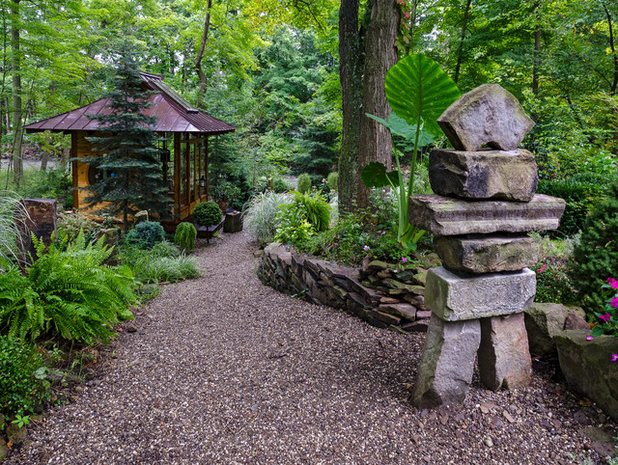
Miriam's River House Designs, LLC
Rethink your garden floor. There are things you can do, in addition to designing your garden to attract wildlife, to add the element of sound to your space — starting from the ground up. Your garden substrate goes a long way to set the mood. While concrete and stone are certainly utilitarian, other choices may be more tactile.
Gravel offers a wonderful auditory crunch when walked upon. Your footsteps embed in it while you walk across it. In this way you become one with your garden instead of gliding across the top of it. Additionally, gravel is inexpensive and readily available, and comes in a variety of colors. This is why I love to use it in the garden.
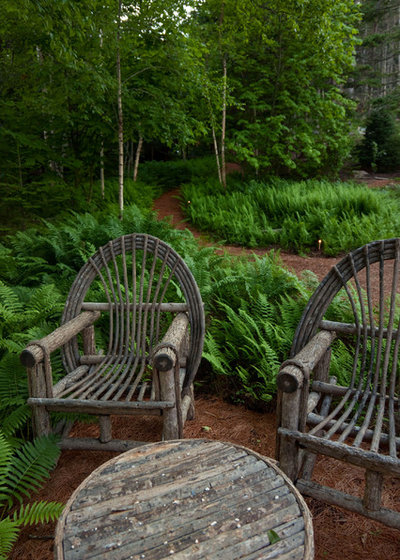
Matthew Cunningham Landscape Design LLC
Have you ever been hiking in a forest and could hear the palpable silence? Consider mulch as an option for the more informal paths in your space. The experience of walking on a mulched path is quite different from that of walking on a concrete sidewalk or an asphalt driveway.
Shredded mulch is readily available, inexpensive and likely the by-product of industry. It may need to be replenished annually and can adhere to shoes, so it’s a better choice for outlying areas of your garden.
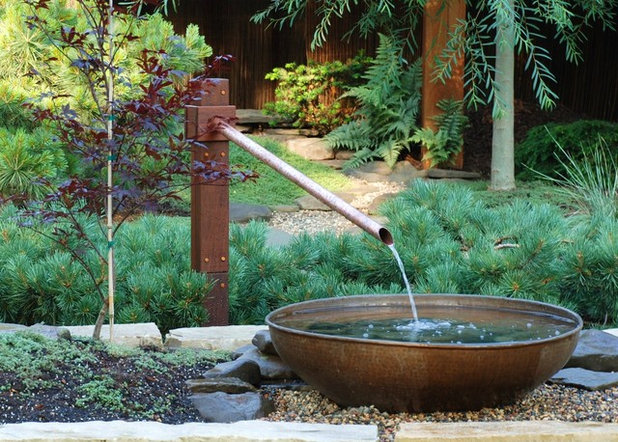
Garden Structures & More
Thoughtfully add some water. Water features have become an expected element in well-appointed gardens. Before you run to the nearest garden center and purchase the ceramic kit with a pump, add water and connect the power, consider what you want your water feature to do for your space. The water velocity, volume, length of drop and depth of the reservoir all will affect the sound of your feature.
The feature shown here is commonly referred to as a deer catcher, as historically the sound was employed to chase away deer. The sound created by this type of feature is more of a solitary, hollow and contemplative one. It would be most appropriate for a small courtyard garden or for a philosophical one.
See how to make your own tranquil garden fountain
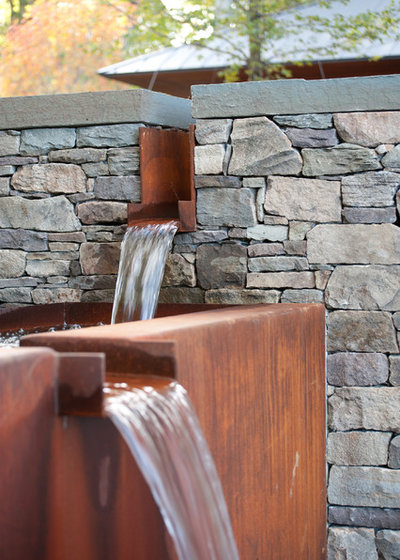
Wagner Hodgson
This type of water feature is a series of spillways, or rills. The sound is similar to that of a chorus, as opposed to that of a soloist. Each spillway has a different tone, due to the width of the opening and the length of the drop. Adjustments in both may be incorporated into the design to achieve the desired effect. The wider the opening and the longer the drop, the deeper and fuller the resulting sound will be.
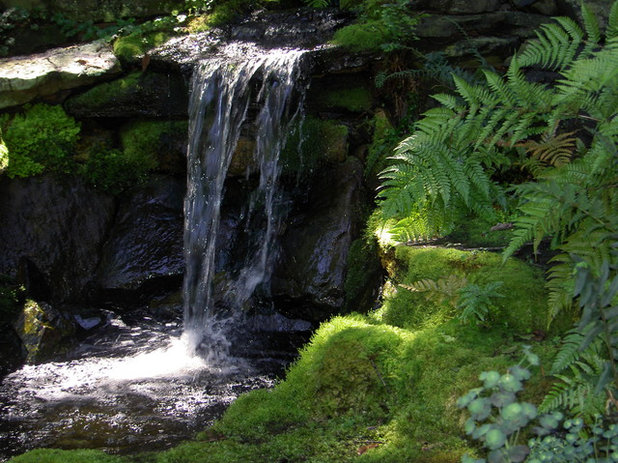
Jay Sifford Garden Design
A traditional waterfall allows for some fine-tuning after installation. By installing a ball valve on the outlet portion of your pump, you can adjust the water flow to provide the sound that pleases you. Never install the valve on the intake portion of your pump, as this can significantly shorten the life expectancy of your equipment.
The addition or subtraction of rocks at the base of your waterfall can significantly affect the quality of the sound it produces. Adding rocks will brighten the sound and create splash. For ease of maintenance, be sure that doing this will not cause your feature to lose water.
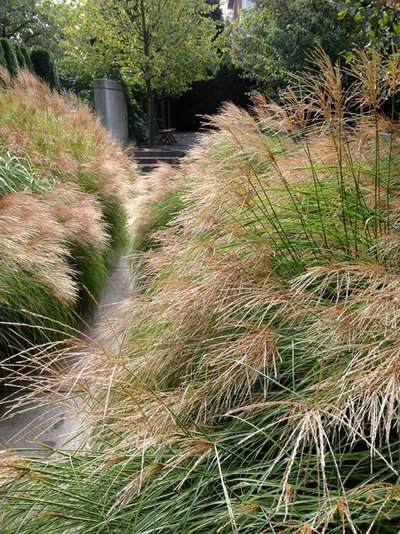
CYAN Horticulture
Design with plants that respond to the wind. Certain plants respond to wind to produce sound in a way that can be thoughtfully orchestrated. Consider planting grasses en masse in a sunny area of your garden that receives a consistent breeze.
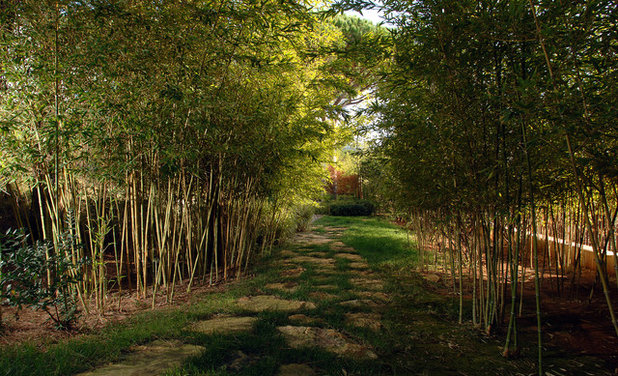
Francis Landscapes
Bamboo is an excellent choice to introduce into your garden for the purpose of creating sound. Its dry leaves and hollow stems respond well to breezes. It grows well in sun to medium shade. Take precautions by installing a bamboo barrier to keep it from aggressively spreading.
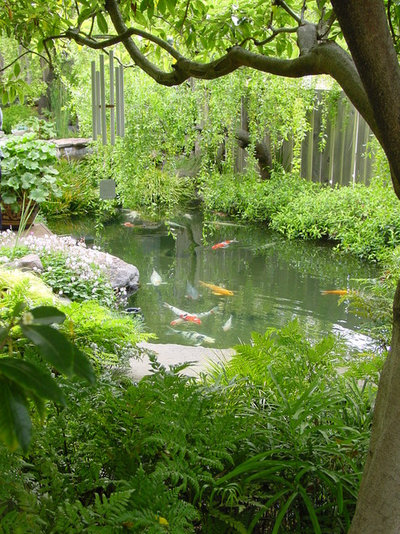
www.KarlGercens.com
Add some wind chimes. Historically I’ve hated wind chimes, because the small ones from the dollar stores have a pitch that seems abrasive to my ears. The larger, more expensive wind chimes currently on the market have forced me to change my mind.
Chimes made by companies such as Corinthian Bells and Music of the Spheres have deeper, melodious tones that erase the stress of the day. Many of these can range up to 90 inches in length and have a wide range of resonance that resembles that of a pipe organ. Most are also tuned to specific keys and continue to vibrate long after they are struck. Be prepared to make an investment, as many of these chimes can run well over $500. I did, and I’ve never regretted it.

D-CRAIN Design and Construction
Many of the chimes manufacturers also produce bells that can be combined in various configurations to give you the sound you desire. A single bell can create a contemplative mood suited for a meditation garden, while multiple, compatible bells give off a vibe that is suited for the garden of the entertainer or extrovert. Experiment until you discover a configuration that works for both you and your space.





